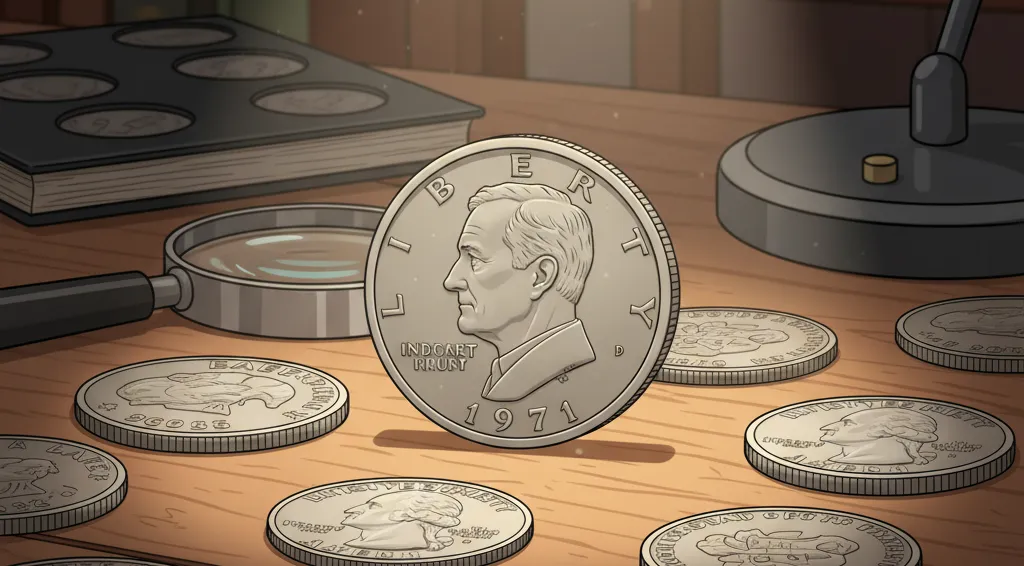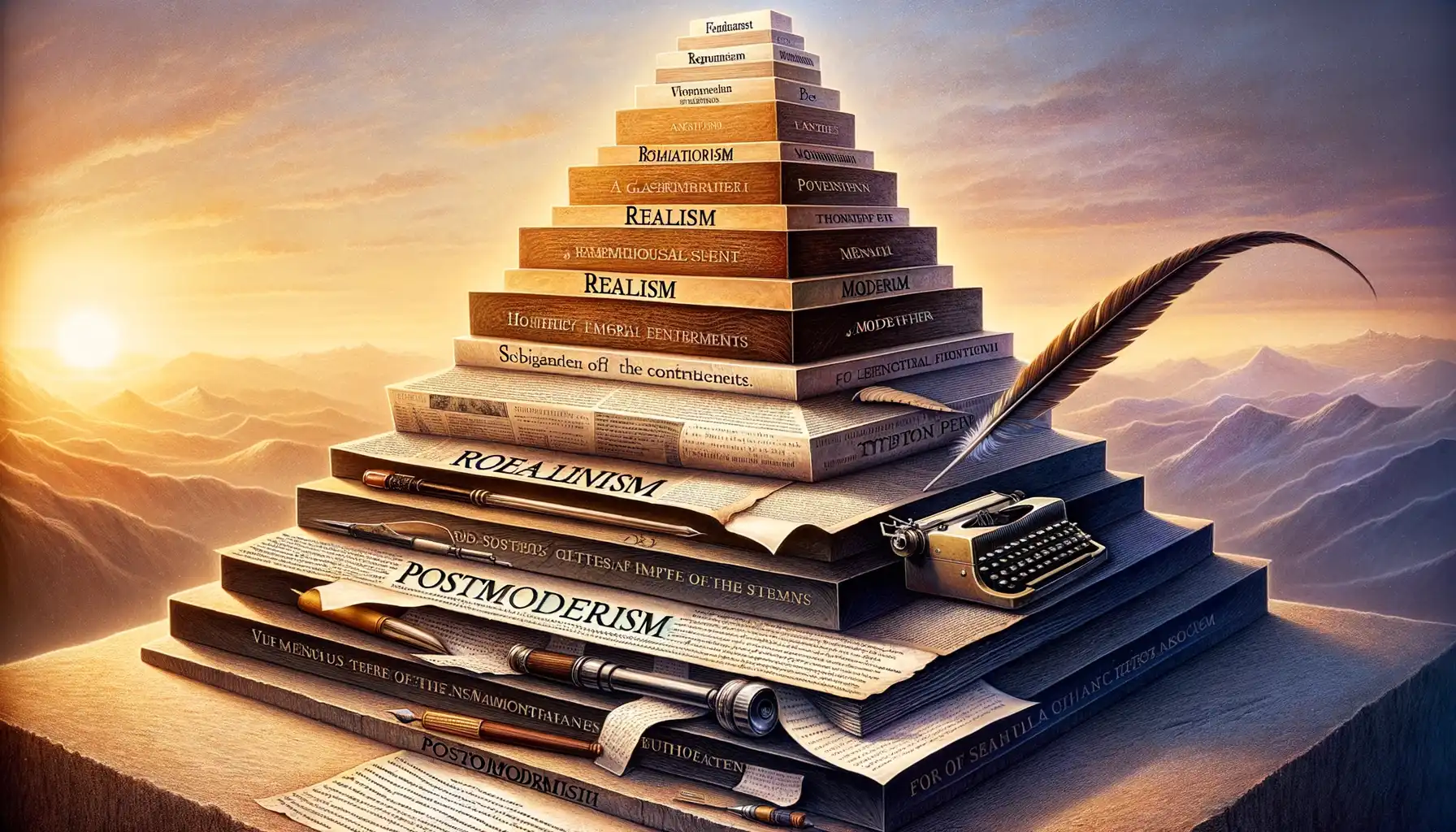You’ve probably already found out the 1971 silver dollar value, but this is just the beginning, because the Eisenhower Dollar coin series was a way to honor the memory of a great man, Dwight D. Eisenhower, who was the 34th president of the United States and a general during World War II, and also demonstrated the great achievement of the nation — the landing of a man on the moon.
The idea to issue this new dollar coin arose after Eisenhower’s death in March 1969, and the United States Congress agreed to issue it, so for the first time since 1935, a large dollar coin was put into circulation.
But the series quickly divided into two types: simple copper-nickel coins for everyone, as well as collectible sets, which included 40% silver.

| Year & Mint Mark | Metal Type | UNC | MS-65/PF-65 |
| 1971 P | Clad | $2 – $4 | $5 – $8 |
| 1971 D | Clad | $2 – $4 | $5 – $8 |
| 1971 S | 40% Silver (Unc) | $10 – $15 | $30 – $50 (Value depends on silver price) |
| 1971 S | Clad Proof | $3 – $5 | $8 – $15 (Proof) |
| 1972 P | Clad (Type I/III) | $2 – $4 | $5 – $8 |
| 1972 D (Common) | Clad (Type I/III) | $2 – $4 | $5 – $8 |
| 1972 D (Rare) | Clad (Type II) | $100 – $200 | $1,500 – $3,000+ |
| 1972 S | 40% Silver | $10 – $15 | $30 – $50 |
| 1972 S | Clad Proof | $3 – $5 | $8 – $15 (Proof) |
| 1973 P (Low Mintage) | Clad | $5 – $10 | $20 – $40 |
| 1973 D (Low Mintage) | Clad | $5 – $10 | $20 – $40 |
| 1973 S | 40% Silver | $10 – $15 | $30 – $50 |
| 1973 S | Clad Proof | $3 – $5 | $8 – $15 (Proof) |
| 1974 P | Clad | $2 – $4 | $5 – $8 |
| 1974 D | Clad | $2 – $4 | $5 – $8 |
| 1974 S | 40% Silver (Unc) | $10 – $15 | $30 – $50 |
| 1974 S | Clad Proof | $3 – $5 | $8 – $15 (Proof) |
| 1776–1976 P | Clad | $2 – $4 | $5 – $8 |
| 1776–1976 D | Clad | $2 – $4 | $5 – $8 |
| 1776–1976 S | 40% Silver (Unc) | $15 – $25 | $35 – $60 (Unc) |
| 1776–1976 S | Clad Proof | $3 – $5 | $8 – $15 (Proof) |
| 1977 P | Clad | $2 – $4 | $5 – $8 |
| 1977 D | Clad | $2 – $4 | $5 – $8 |
| 1977 S | Clad Proof | $3 – $5 | $8 – $15 (Proof) |
| 1978 P | Clad | $2 – $4 | $5 – $8 |
| 1978 D | Clad | $2 – $4 | $5 – $8 |
| 1978 S | Clad Proof | $3 – $5 | $8 – $15 (Proof) |
Values change based on market demand, condition, grading, and the specific characteristics of individual coins.
Design, Meaning, and the Artist
Frank Gasparro, the chief engraver of the United States Mint, was the official designer of the coin.
The Front Side: On the front side of the coin, you can see a Dwight D. Eisenhower’s face from the side.
The word “LIBERTY” is written in a half-circle above his head, and the year the coin was made is below the picture.
The Back Side: The back side was first planned to be a very simple picture, but in the end, they used a picture that was inspired by the official patch of the Apollo 11 moon mission.
In the middle there is a bald eagle, holding an olive branch in its claws, and the eagle is landing on the Moon while the Earth can be seen behind it.
Around the edge of the coin are the words “UNITED STATES OF AMERICA” and “ONE DOLLAR” as well as the country’s saying “E PLURIBUS UNUM”.
What it is Made of and Technical Facts
| Feature | Clad Coins | 40% Silver Coins |
| Years Made | 1971–1978 | 1971–1976 |
| Purpose | For everyone to use (P, D) | For collectors in special sets (S) |
| Outer Layer | 75% Copper, 25% Nickel | 80% Silver, 20% Copper |
| Inner Core | Pure Copper | 79% Copper, 21% Silver |
| Total Silver | 0% | 40% of the total weight |
| Weight | 22.68 grams | 24.59 grams |
- Clad Coins: These coins were meant for everyone to use and were made at the Philadelphia (P) and Denver (D) mints.
- 40% Silver Coins: These were only put into special “Uncirculated” (never used) and “Proof” sets — they were only made in San Francisco (S).
Years Made and Special Coin Types
1971: The Start
- 1971-S 40% Silver Uncirculated: These coins often have marks from being in bags because of how they were packaged, so those like MS-65 or better are worth much more.
- 1971-S 40% Silver Proof: Some types are known to have a “Type B” back side, a test and has small differences in how the Earth and clouds look, but this idea is more useful for the 1972 coins.
1972: The Important Types (Type I, II, III)
| Feature | Type I (Common) | Type II (Rare) | Type III (Changed) |
| Found at | P, D, S | D | P, D, S |
| Picture Detail | Low, smooth detail | High, sharp detail | Changed Low Detail |
| Rim Edge | Wide, round edge | Narrow, flat edge | Wide, round edge |
| Moon Lines | Three clear lines on the moon surface under the eagle | Lines on the moon surface are less clear | Three clear lines, but not as deep as Type I |
| Caribbean Islands | Smooth, less detailed | Sharp, very well-detailed | Smooth, like Type I |
| Collector Value | Low | HIGH | Medium |
1973: Low Number Made
- 1973-P and 1973-D: Even though only about 2 million of each were made, compared to many millions in other years.
- 1973-S 40% Silver Uncirculated/Proof
1974: Back to Normal Numbers
In 1974, the number of coins made went back to ordinary levels, and there are no big special types in this year, only the common coins that weren’t used and the Proof coins from San Francisco.

1975–1976: The Bicentennial (200 Years)
To celebrate 200 years since the Declaration of Independence was signed (1776–1976), the picture on the back side of the Eisenhower Dollar was changed for a short time.
- Design: The new back side, made by Dennis R. Williams, the Liberty Bell in front of the Moon
- Date: The coins were made in 1975 and 1976, but all of them had the double date “1776–1976,” and there are no coins with just the date “1975”
| Feature | Bicentennial Type I | Bicentennial Type II |
| Font on Back | The letters in the words are big and strong | The letters are more graceful and thin |
| Bell Lines | Clear and thick lines, especially in the crack of the Liberty Bell | More graceful and thin lines |
| How Common | An early type, less common | A later and more common type |
| Metal Type | F Clad (P, D), 40% Ag (S) | Clad (P, D), 40% Ag (S). |
1977 and 1978: The End of the Series
After the Bicentennial program finished, the Mint went back to the first design of the eagle on the Moon on the back side.
- 1977-P, 1977-D, 1978-P, 1978-D: These are the normal clad coins.
- 1977-S and 1978-S (Proof): The Proof coins in these years were only made of the copper-nickel metal, because the program for 40% silver coins ended after 1976.
- 1978-P: This coin was the last one in the Eisenhower Dollar series.
In 1979, the Eisenhower Dollar was replaced by a smaller coin, the Susan B. Anthony Dollar, because the large size of the “Ike” coin wasn’t for everyday spending, and they mostly stayed in bank vaults.
Collector Value and Mistakes
| Year | Mint Mark | Metal Type | Mintage |
| 1971 | S | 40% Silver | 6,868,530 |
| 1972 | D | Clad | 150,000,000+ |
| 1973 | P | Clad | 1,769,258 |
| 1973 | D | Clad | 1,769,258 |
| 1974 | S | 40% Silver | 4,260,356 |
| 1976 | P | Clad | 1,173,371,000 |
| 1976 | S | 40% Silver | 11,000,000 |
| 1978 | P | Clad | 25,702,000 |
The Most Valuable Items for Collectors
- 1972-D Type II: This is the rarest one, and very good tokens can cost hundreds or even thousands of dollars.
- 40% Silver Coins (1971-S, 1972-S, 1973-S, 1974-S, 1776-1976-S): The value of these coins will always be related to the price of silver.
- Die Errors (Doubled Die): There are a few coins with a doubled picture, but they are not as many or as important as on other coins. The most well-known errors are when the word “LIBERTY” or the year looks doubled.




